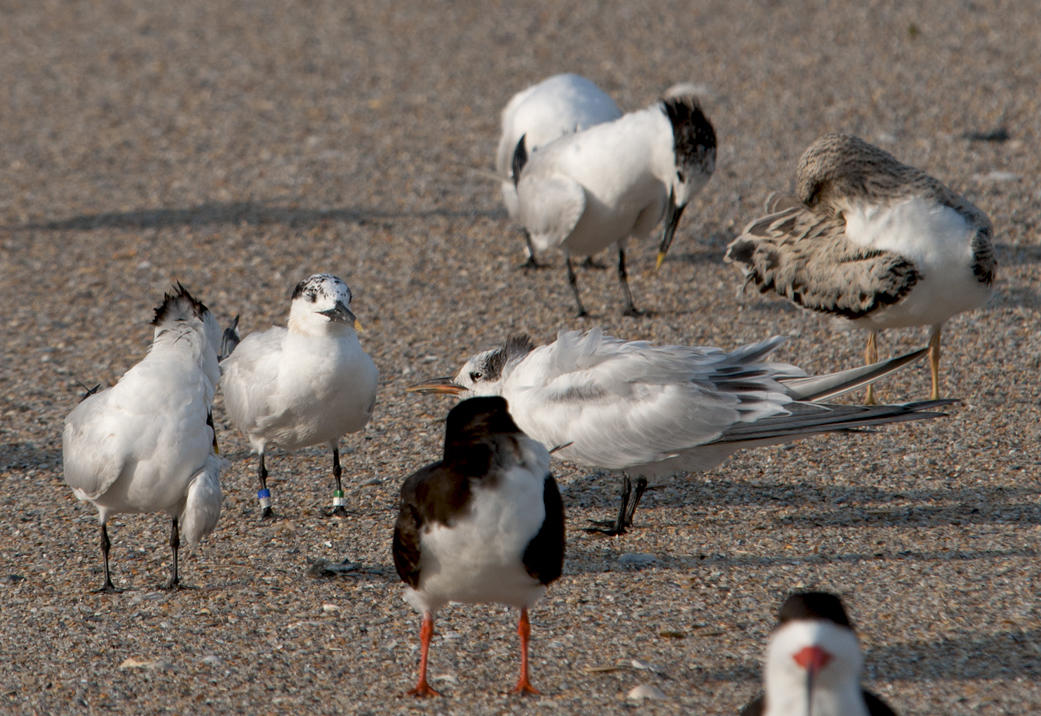Bird banding is an essential piece of collecting valuable data and understanding bird conservation. In this series, we’ll explore the necessity of bird banding practices and explore insights found through the shared data of our birds from North Carolina’s coast to the entire Atlantic Flyway.
Please welcome Coastal Biologist Lindsay Addison.
We saw this Sandwich Tern on August 8, 2012 at the south end of Wrightsville Beach. Most nesting was over for the season, and as is common late in the season, Royal and Sandwich Terns were beginning to reappear at inlets where they roost and rest up for migration.
The tern was banded as part of a long-term project researching productivity and survivorship of Royal and Sandwich Terns on Isles Dernieres in Louisiana. It was captured as a breeding adult on Raccoon Island by Dr. Aaron Pierce on May 28, 2012. It was nesting in a mixed colony of Royal and Sandwich Terns.

It turned up a few months later over 800 miles away in North Carolina with a begging fledgling in tow. Another banded Sandwich Tern, which had fledged that year from the same site, was also on Wrightsville Beach.
Few records exist of Sandwich Terns dispersing from the Gulf to the Atlantic Coast, though at least one Sandwich Tern captured nesting near Cape Lookout had been banded as a chick on the coast of Mississippi. Some species travel far and wide during post-breeding dispersal. This may be an adaptation to locate new nesting habitat, or some individuals could simply be off-course.
Because not many Sandwich Terns are color banded, it’s not clear if this is a typical pattern of movement that has gone undocumented or if the eastward trip this small group of terns took was unusual.
For more information on Audubon NC’s bird banding program and more recorded species, click here.
Spotting and reporting banded birds is a great way to become a citizen scientist and contribute to our knowledge of birds on the coast. Always remember to give birds the space they need to thrive. Click here to learn more about Audubon’s Sharing Our Seas and Shores program.



